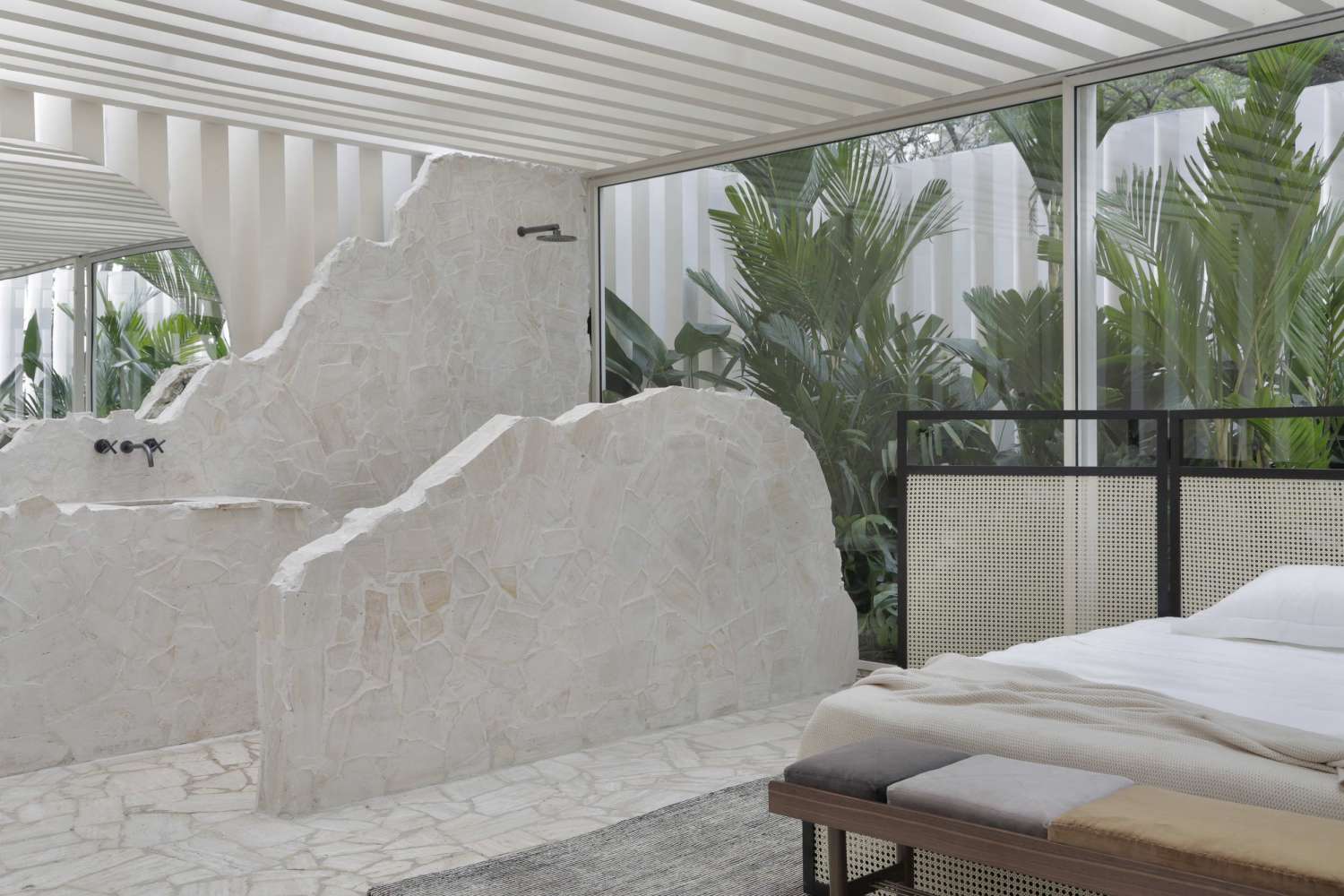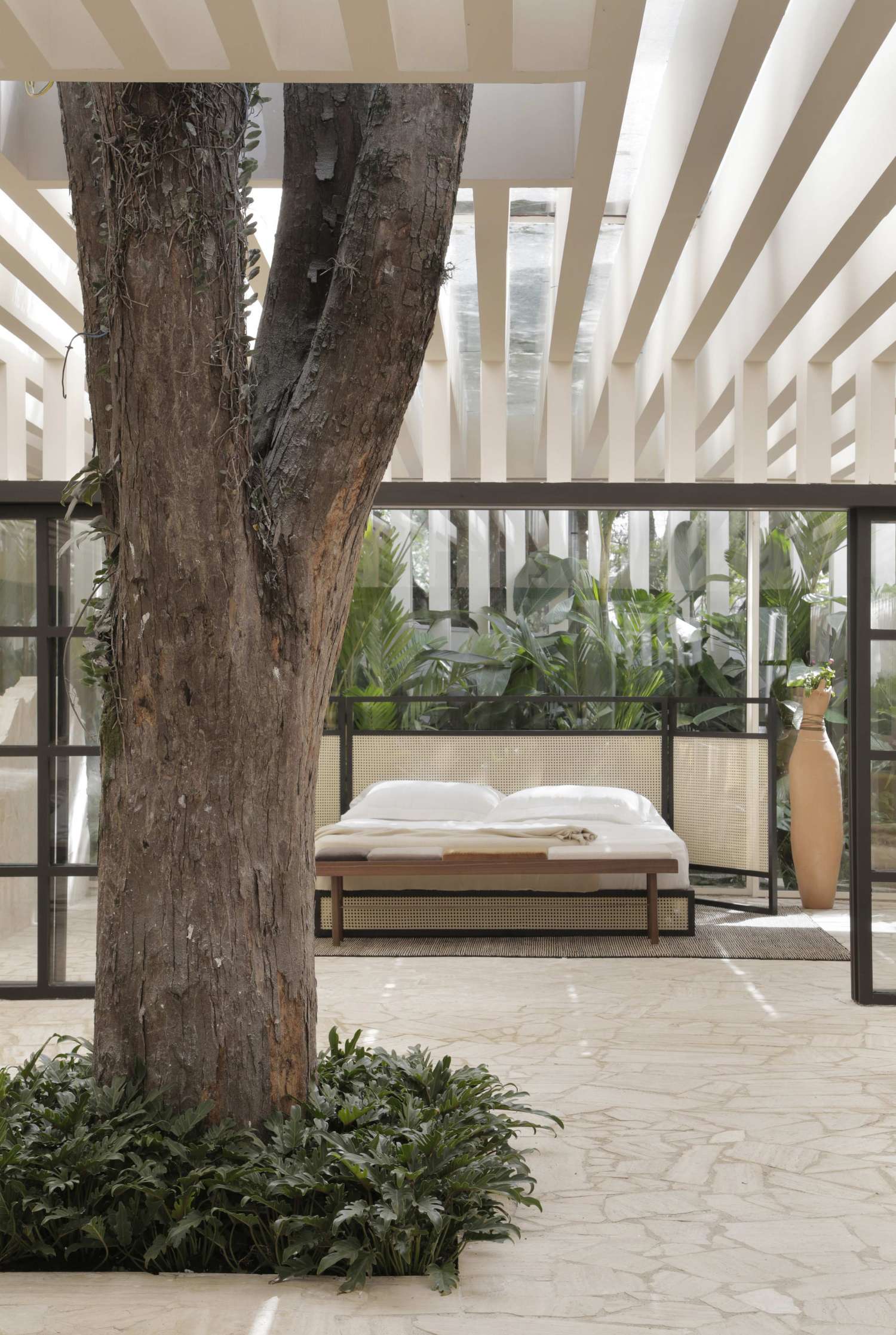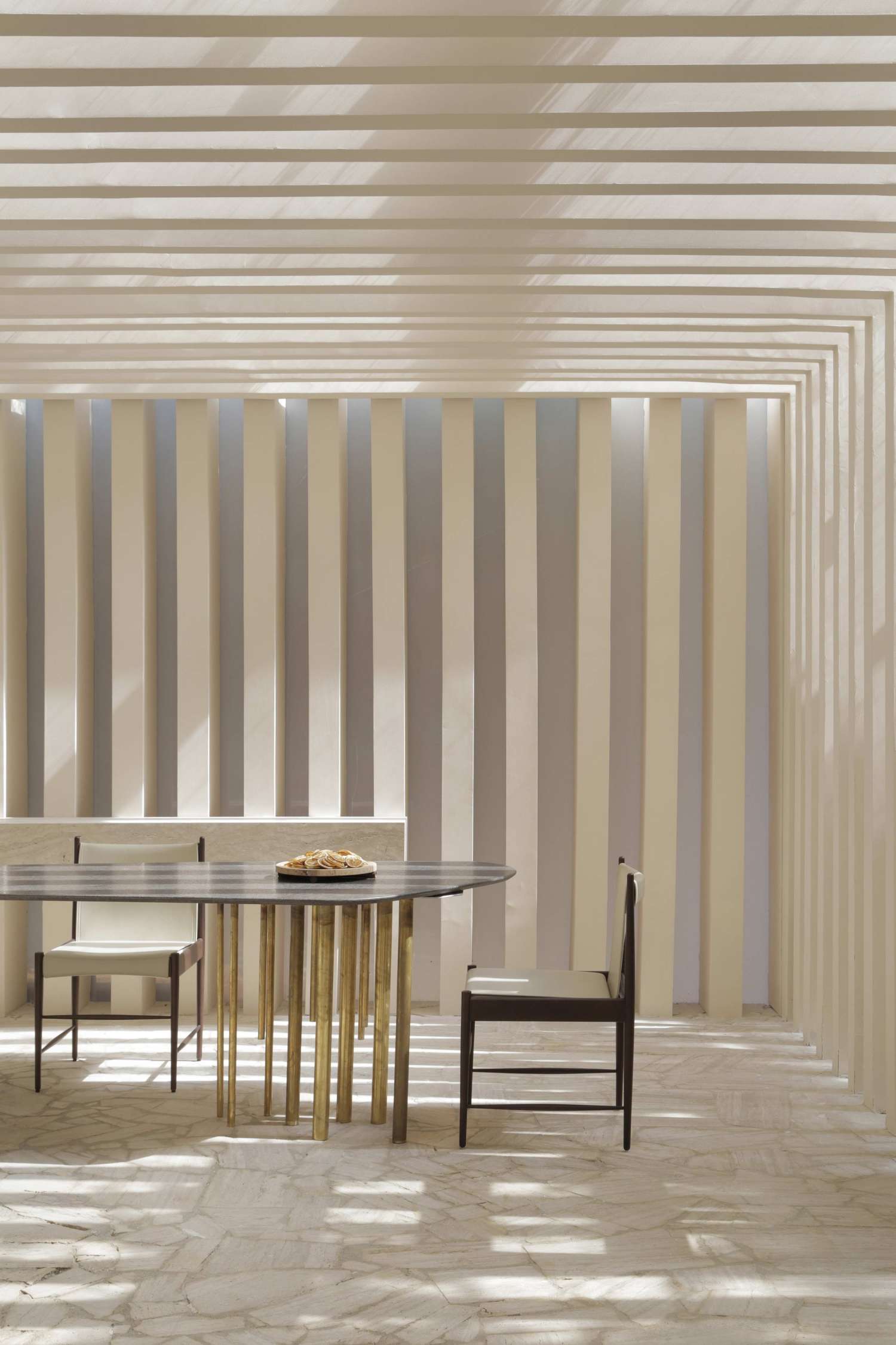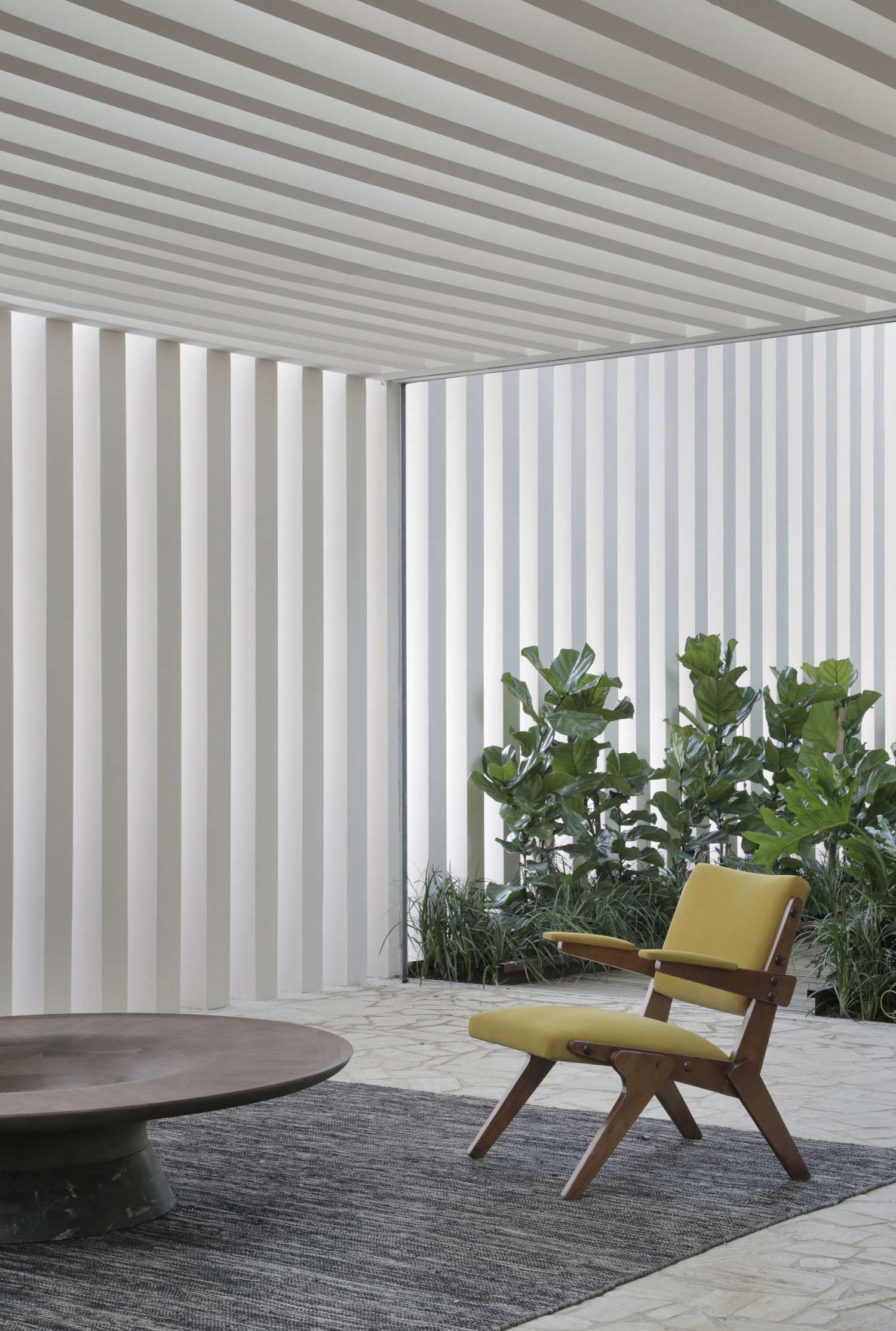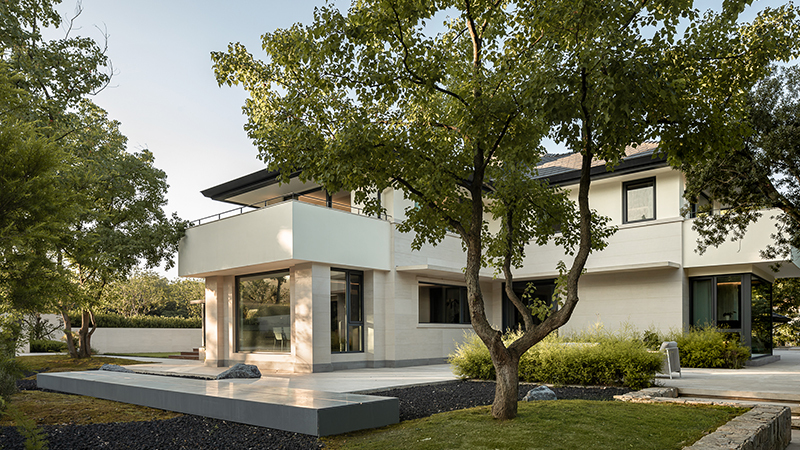| 公司: | Studio Otto Felix | 类型: | 景观 |
|---|---|---|---|
| 地区: | 巴西 | 标签: | Denilson Machado | 庭院花园 | 别墅私宅 |
Otto Felix是一位以其草图中出现的奇异和富有表现力的线条而闻名的建筑师,他出现在CASACOR圣保罗2019年,今年在赛马俱乐部担任主题为“Planeta Casa”。专业人士以独特的方式将活动概念转换成250平方米的地址,它呼吸着笔直的线条,和谐地将乡村的一面与当代的缩影融合在一起。Casa das Sibipirunas酒店分为带壁炉的起居室,厨房和带衣柜的套房,提供更具反思性和断开连接的住宅,建议更简单的生活作为参考。提出一个当代建筑项目,从技术角度来说,可以被认为是轻松和易于执行,该住宅基于三个主要元素:玻璃,石膏和罗马石灰华。这些材料的强大存在重塑了乡村别墅的概念,带来了更现代,极简主义和着名的重读。通过结构件或通常称为金属梁的方式,在其余空间中使用玻璃封闭,房屋由Lock Engenharia执行,并与两个已经存在的树木融为一体,诗意和有机的环境。
Otto Felix, an architect known for the singular and expressive lines that emerge from his sketches, is present at CASACOR São Paulo 2019, which this year takes as the theme‘Planeta Casa’ in Jockey Club. In a unique way, the professional translated the concept of the event through an address of 250m² that breathes straight lines and mixes, harmonically, a rustic side with the epitome of the contemporaneity. Casa das Sibipirunas, divided into a living room with fireplace, kitchen and a suite with closet, instigates a more reflective and disconnected dwelling, where the proposal for a simpler life was established as a reference. Proposing a contemporary architectural project that, in technical terms, can be considered light and ease to perform, the residence was based on three main elements: glass, plaster and Roman travertine. The strong presence of these materials reinvents the concept of country house and brings a much more modern, minimalist and famous re-reading. Created by means of structural pieces, or commonly called metal beams, with glass closure in the remaining spaces, the house had the work executed by Lock Engenharia, and integrates with two trees that already existed in the place, to which poetically and organic, baptized the environment.
在入口处,游客可以通过木制人行道和绿色花园来引导,提供热带接待,丰富的bossa和沉思。由Daniel Otnes设计的透明建筑,由Daniel Nunes签名的景观仍然由室内设计延续。天花板采用石膏板条,可以让阳光进入,营造出一种有趣的光影效果。在夜晚,透过建筑物柱子的照明营造出一种风景优美的氛围,突出了环境的结构。
At the entrance, the visitor is guided by a wooden walkway and a green garden, providing a tropical reception, rich in bossa and contemplation. The landscaping, signed by Daniel Nunes, is still perpetuated by the interiors thanks to the transparent architecture designed by Otto. The ceiling, in gypsum slats, allows the entrance of sunlight and creates an interesting play of light and shadow. At night, the lighting that permeates the pillars of the building creates a scenic atmosphere and highlights the structure of the environment.
起居室设有一个壁炉,欢迎并通过火炉展示,这是一个与过去和现在形成鲜明对比的重要元素。通过Kamy的地毯划定了这个地方,打破了空间的展示和划分范例,这些空间通过精心挑选的家具相互交谈,并以相似的舒适度和精致度进行排列。家具是一个单独的章节:优雅和清醒,色调较暗和较温暖,与项目的其他组成相互作用。例如,带有黄铜脚和仿古皇家咖啡花岗岩台面的餐桌是建筑师的原创画。
The living room has a fireplace, which welcomes and displays by fire, a vital element that contrasts past and present. By Kamy’s carpet delimits the place, breaking the paradigm in the presentation and division of the spaces, which talk to each other with carefully selected furniture and arranged with similar proportions of comfort and sophistication.The furniture is a separate chapter: elegant and sober, with darker and warmer tones, which interact with the rest of the composition of the project. The dining table with brass feet and rustic imperial coffee granite top, for example, is an original drawing of the architect.
为了以一种独特的方式将这一概念联系起来,建筑师使用了已经存在的元素和作品,或是专门为当地艺术家的表演而创作的作品。例如,CacáDeleva制作的陶瓷花瓶,Juliana Maia制作的挂毯,以及由蒂达里科制作的挂毯。此外,仍来自仙人掌的石膏图案,创造了一种艺术干预,将我们带回到童年,并通过简单的鲜花卷,使我们回到这个时代。
To tie the concept in a unique way, the architect used elements and works that already existed, or that were created especially for the show, of local artists. Ceramic vases, by CacáDeleva, tapestries made by Juliana Maia, and rendered by TidaRicco, for example, complete the narrative. In addition, paintings with plaster cast, still from Cacá, create an artistic intervention that brings us back to childhood and simpler times, through elements such as figurines, pasta rolls and flowers. Each one with its singularities, transgress the fragility of the times.
在40年代和50年代的解决方案的启发下,奥托将在圣保罗市的旧建筑中发现的红色陶瓷地板和精美的橱柜中的装饰材料作为参考。当时的时尚和销售超过瓷砖本身的设备,最终被遗忘并被替换。建筑师用罗马石灰华的残片重建了页面,从可持续的大理石工程中重新利用了残片。
Inspired by the solutions of the 40s and 50s, Otto brought as a reference the red ceramic shards floors found in old buildings in the city of São Paulo. What was fashion at the time and sold more than the pieces of tile itself, was eventually forgotten and replaced. The architect recreated the paging with shards of Roman Travertine, from the reuse of leftovers from a marble. Besides presenting one of the sustainable facets of the project, it still constitutes the minimalist bench of the cuisine, making it a kind of ruin that is confused with an artistic intervention. The locksmith’s doors, store the appliances and cabinets in an elegant and subtle way.
项目名称:Sibipiruna有机别墅
公司名称:Otto Felix
网站:http://www.ottofelix.com.br/
联络电邮:otto@ottofelix.com.br
项目地点:Jóquei Clube
完成年份:2019年
其他参与者:
作者:Otto Felix
合作作者:Tici Andriani----室内设计师
小组成员:César Martini、Flávia Ganselli、Marcela Goraieb、Priscila Balbino。
风景:Daniel Nunes
摄影师:Denilson Machado-MCA estudio
youtube/Vimeo链接:https://vimeo.com/340084219
Project name:Sibipiruna’s House
Company name:Studio Otto Felix
Website:http://www.ottofelix.com.br/
Contact e-mail:otto@ottofelix.com.br
Project location:Jóquei Clube – São Paulo– SP
Completion Year:2019
Other participants:Author: Otto Felix
Co-author: Tici Andriani – Interior Designer
Team: César Martini, Flávia Ganselli, Marcela Goraieb, Priscila Balbino.
Landscape: Daniel Nunes
Photo credits:Denilson Machado - MCA estudio
Youtube / Vimeo links:https://vimeo.com/340084219
更新日期:2019-07-29 14:39:19
非常感谢 Studio Otto Felix 带来的精彩项目, 查阅更多Appreciations towards Studio Otto Felix for sharing wonderful work on hhlloo. Click to see more works!

